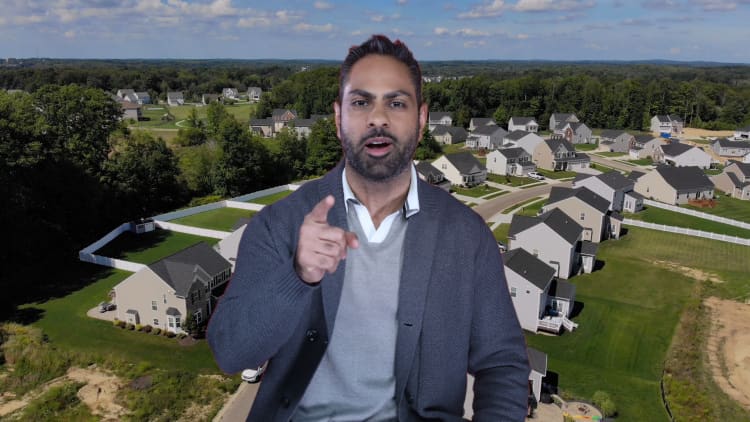It's 2019, and houses are expensive.
That's probably an understatement. The median home listing price in the U.S. is $289,000, according to Zillow. Newly constructed houses are even pricier: The median cost of a new home in the U.S. is about $312,800, according to data collected by the U.S. Census Bureau.
Those prices can vary widely depending on where you're looking to buy. The median cost of a home in Buffalo, New York, is just $157,500, compared to $1.3 million in San Jose, California, which is currently the highest-priced metro in the U.S.
So how do you save up for a down payment on a home? Personal finance coach Ramit Sethi tells CNBC Make It that you won't do it by trying to live super frugally or piling on the guilt over your spending habits. Instead you need to make your savings automatic, and even then, it may take some time to build up enough for a down payment, Sethi says.
First, run the numbers to get a realistic sense of what you can afford. Sethi, the author of the best-selling book "I Will Teach You to be Rich," says that a 30-year mortgage and household expenses should represent no more than 30% of your income. That includes costs such as taxes and insurance.
You'll also need to save up about 20% of the purchase price for the down payment. If you're buying a home that costs $245,000, that means you'll need to have nearly $50,000 saved up.
This is where automating your saving strategy, which Sethi says is the best way to save for a big purchase, comes into play. You know that you want to save $50,000. In order to do that, let's say you start by saving $100 a month.
Set up an automatic transfer from your checking to your savings account for $100 each month. Typically, you can even label this account "Dream House," Sethi says. You should schedule the transfer to happen right around when you get paid, so you're not tempted to spend that money elsewhere.
More from Invest in You:
Millennials are bullish on Roth IRAs. Many wish they started earlier
Sallie Krawcheck: 'Don't buy daily coffee' is terrible advice—here's why
Why everyone should get a prenup, according to 'Broke Millennial' author Erin Lowry
Where you keep those savings matters too: If you put that money in a high-yield savings account earning 2% APY, that Dream Home fund is going to take about 30 years to grow. Instead, you should consider putting the money into an investment account that could net you higher returns. Keep in mind, though, that you will likely have to take on more risk to earn those higher returns, meaning you could lose money if the market tanks.
You can also consider accelerating your savings. Instead of saving $100 a month, put $200 or $300 aside, or if you're able to, even $400 to $500. Save the highest amount you can comfortably set aside while still paying your bills, taking care of any debt payments and putting money toward your retirement goals.
You can also opt to make a "very conservative financial decision" when you do buy, Sethi says. Instead of buying your dream home right away, find something that may need some work, but is a bit cheaper.
But no matter what type of house you choose, automating your savings is a good path to achieving your goals. "The beauty of automating your savings is that the money just passively goes into your down payment sub savings account," Sethi says, adding that then you don't need to agonize over it every single day.
CHECK OUT: 3 simple ways to save an extra $200 every month via Grow with Acorns+CNBC.
Disclosure: NBCUniversal and Comcast Ventures are investors in Acorns.








